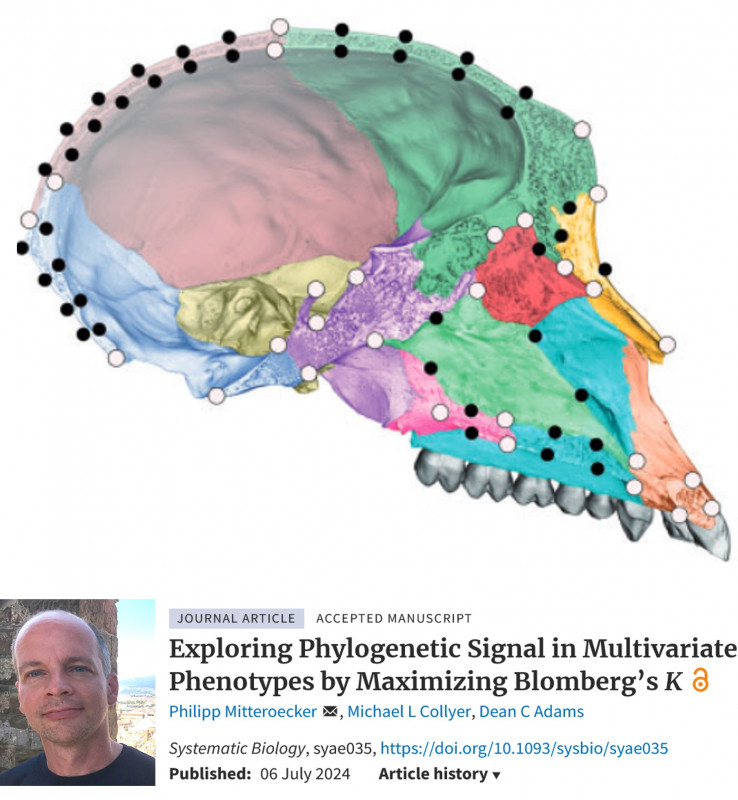News Details

In their most recent paper published in Systematic Biology, Philipp Mitteroecker, Michael L. Collyer and Dean C. Adams introduced a new system to measure phylogenetic signal in multivariate phenotypes. Phylogenetic signal is the tendency of closely related species to resemble each other more than distant ones. The authors approach a long-standing challenge in the statistical estimation phylogenetic signal in mutivariate phenotypes, as phylogenetic signal until now have been mostly designed for univariate traits. However, nature abounds in multivariate phenotypes, for instance the shape of the skull, which consists of length, width, height, and various other morphological features, which together provides a comprehensive view of the cranial shape. Finding an effective measure of phylogenetic signal for multivariate data has posed as a challenge for modern biologists.
A common measure of phylogenetic signal is the Blomberg K. In an earlier paper (Adams 2014), co-author Adams had proposed Kmult which provides an overall estimate of the degree of phylogenetic signal observed in multivariate datasets. A later survey of empirical literature (Adams and Collyer 2019) showed that a large majority of multivariate datasets analysed with Kmult showed significant levels of phylogenetic signals, however these were also interpreted as being “significant, but weak” by many empirists. Adams and Collyer (2019) had noted an alternate possibility that phylogenetic signals could be concentrated in one or a few trait dimensions. In this new paper, Mitteroecker, Collyer and Adams propose a novel method where the multivariate data is decomposed into linear combinations with the most or least phylogenetic signal, measured by Blomberg’s K. These components, called K-components, can be interpreted biologically, and scatterplots can show the data in a way that preserves phylogenetic signal. The authors also present two new summary statistics, KA and KG, which have higher statistical power than the previous Kmult, especially with low or concentrated phylogenetic signal.
The authors also present empirical cases with studies of cranial shapes in two vertebrate clades, viz. crocodyliforms (reptiles) and papionins (Old World primates), wherein significant phylogenetic signals were concentrated in specific trait dimensions, suggesting that phylogenetic signal can vary widely across the dimension of multivariate phenotypes. This variability has important implications for current maximum likelihood approaches used to study phylogenetic signal in multivariate data.

